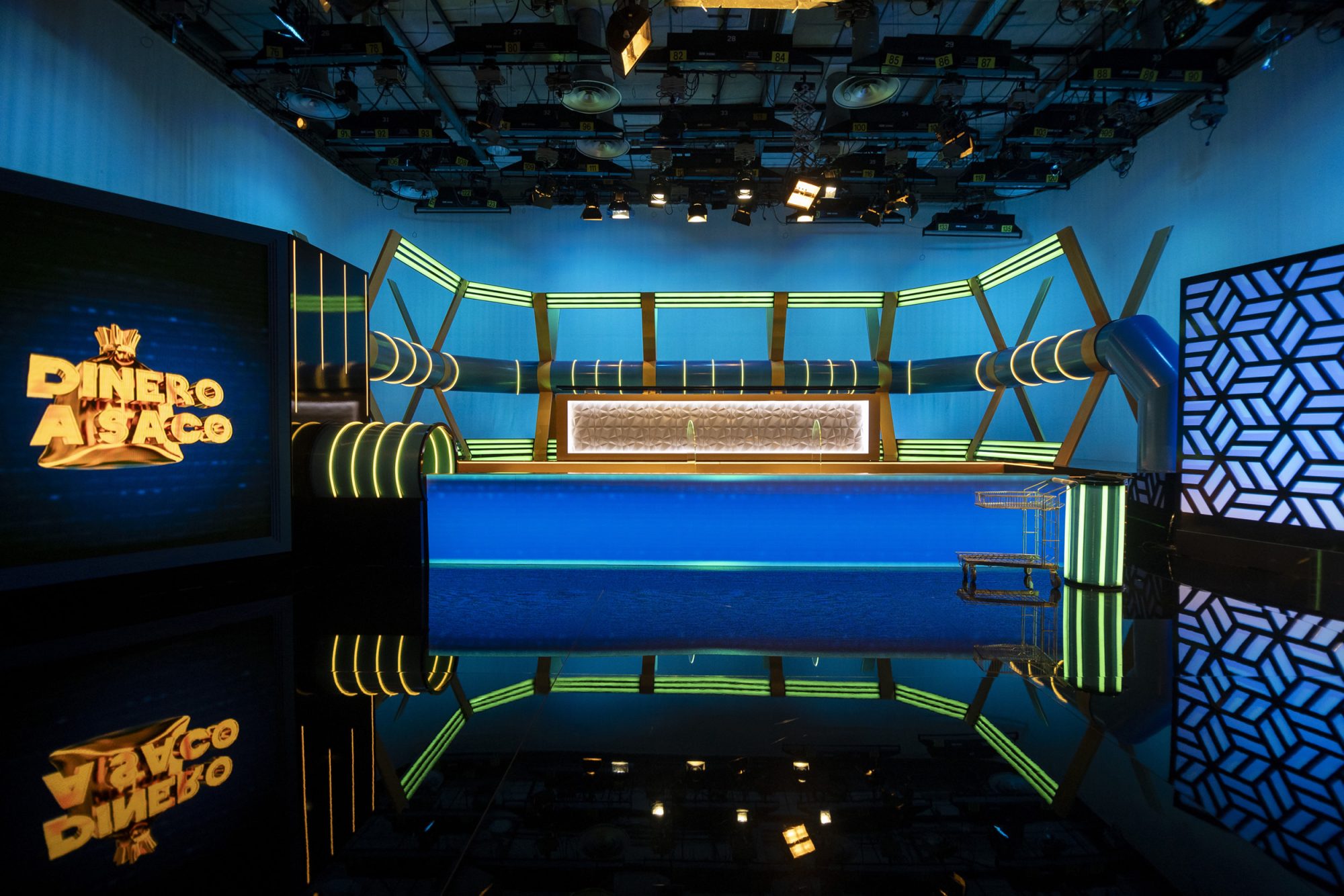The Sustainable Design in scenography is everyone’s commitment.
Image of the set of the television program “Dinero a saco”.
Ephemeral architectural design and scenography play a crucial role in creating visual and emotional experiences at various events, from theater or television productions to corporate events.
In the search for a more responsible and sustainable approach, the use of recyclable materials and the consideration of environmental practices have become imperative. This article explores how sustainable design can be integrated into ephemeral architecture and scenography, prioritizing environmental responsibility.
Set and Sustainable Design:
The set, as a central space for representation, can be transformed into an example of sustainable design. Choosing recycled materials and implementing efficient construction techniques are essential. Opting for certified wood, ecological paints and energy-efficient lighting systems help minimize the environmental footprint.
Scenography with Environmental Responsibility:
Scenography, being responsible for creating fictional worlds, can adopt sustainable practices without sacrificing creativity. Using modular and reusable sets allows them to be adapted to multiple productions, reducing waste generation. Paint and coatings must be carefully selected, prioritizing ecological options and low environmental impact.
Ephemeral Architecture and Recyclable Materials:
Ephemeral architecture is characterized by its temporality, but this does not prevent the adoption of recyclable materials. Removable and reusable structures are essential to minimize waste generation. Experimentation with innovative materials, such as recycled plastics or sustainable composites, offers creative and environmentally friendly alternatives.
Focus on Sustainability:
Sustainable design in ephemeral architecture and scenography is not only limited to the choice of materials, but also involves efficient planning of the use of resources. The implementation of low energy consumption technologies, such as LED lighting systems and renewable energy, contributes to the reduction of the carbon footprint.
Promoting Environmental Awareness:
Sustainable design not only lies in the choice of materials and technologies, but also in the promotion of environmental awareness. Integrating messages related to sustainability into the theme of the scenography or including educational elements in the ephemeral architecture can generate a positive impact on the audience and the industry in general.
In conclusion, sustainable design in ephemeral architecture and scenography is not only a commitment to the environment, but also an opportunity for innovation and creativity. By adopting responsible practices, the entertainment industry can lead the way toward a more sustainable future, inspiring designers and viewers alike to consider the environmental impact of every production. With every conscious choice, a path is built towards a more ecological and ethical world of entertainment.

